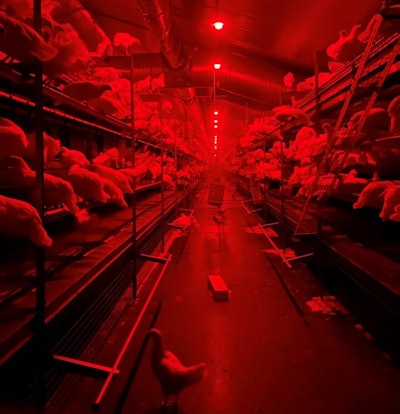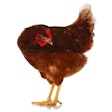
A dynamic lighting system that uses LED light bulbs could optimize poultry flock health and welfare, while reducing energy consumption and costs.
A move toward LED lighting becomes even more important given the new EU regulation that bans the sale of fluorescent lighting as of September 1, 2023.
“Lighting is one of those things where we’re constantly trying to reduce our energy footprint,” explained Josh Muonio, engineering director, Once by Signify. “A lot of the legal requirements are first generated in Europe and then tend to go out across the globe.”
LEDs can also be more cost-efficient and help maximize energy savings, Muonio added.
Benefits for poultry
One of the biggest benefits of LED lighting is the ability to create very specific dynamic lighting systems. This allows poultry producers to formulate specific lighting recipes designed to optimize each stage of production for a flock.
Each lighting recipe is defined by changes in the spectrum, intensity and distribution of light over a set schedule of time.
“Using the right spectral combinations definitely confer health benefits, production benefits and welfare benefits,” said Aaron Stephan, director of biological R&D, Once by Signify. “Our team is working full time to uncover what the right spectral combination is for a given animal at the right stage under a given growth system.”
For example, research suggests that dynamic lighting can increase the number of day-old chicks per breeder, reduce floor eggs and keel bone damage in layer hens and improve the health and welfare of broilers.
Dynamic lighting systems can range from very simple to very complex to custom options that can be controlled wirelessly.
“People in their homes can now control their lights on their phones. The same thing is evolving in the farming industry, with new ways to control lighting systems,” Muonio said.

















